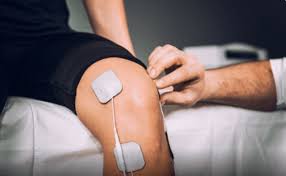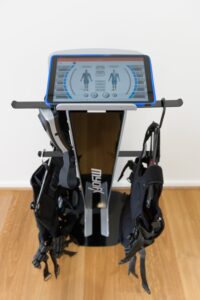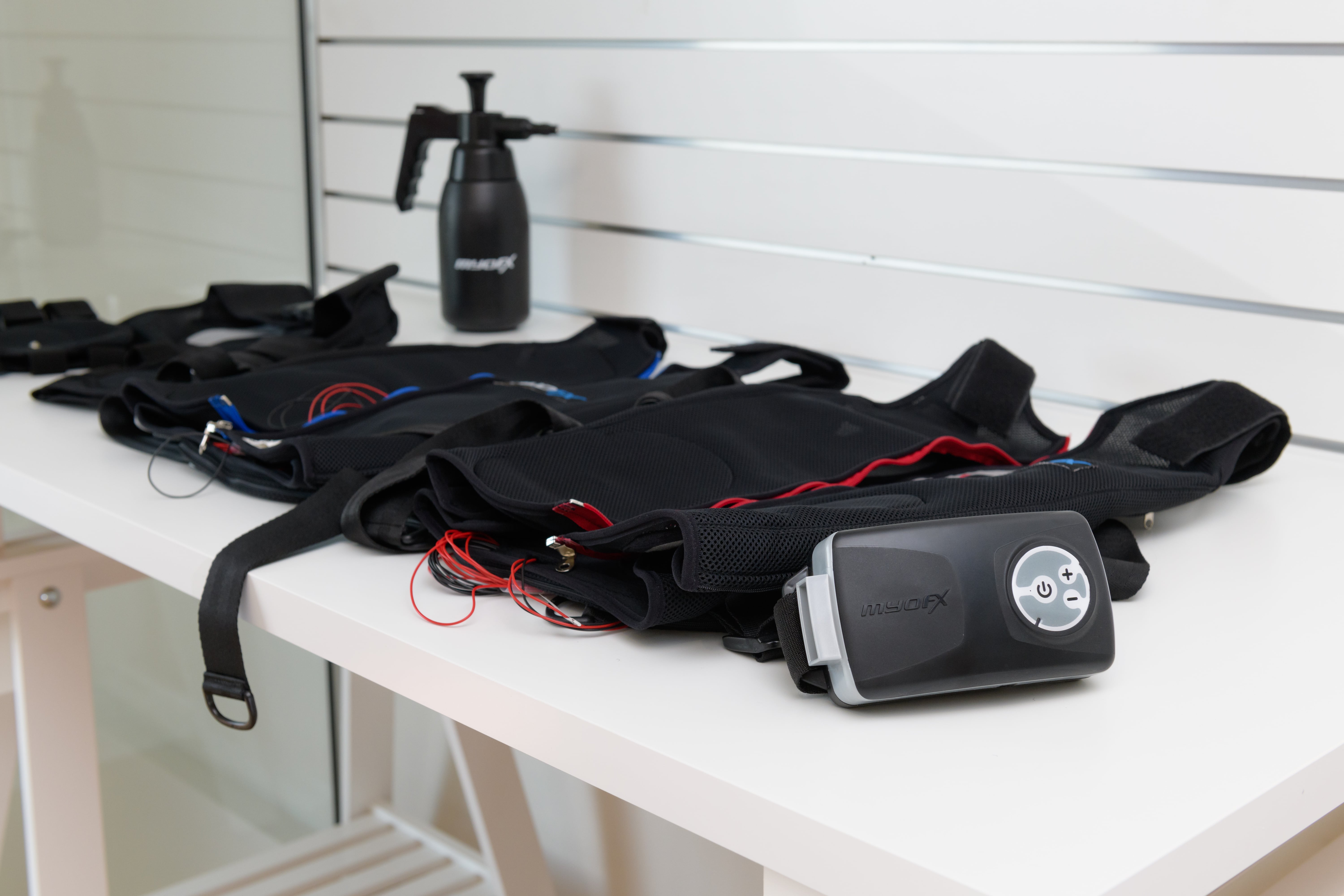What is EMS and How does it work?
Two extremely common questions that you certainly would not be alone in thinking.
Maybe you have never even heard of the term, or perhaps you have heard of it but still don’t know what it is, or you may even know what it is but don’t fully understand or believe it could actually work.
Well EMS is here in Australia now and it is here to stay so now is as good a time as any to learn all about it.
What is EMS and where has it come from?
EMS is short for Electric Muscle Stimulation and it is a game-changer in the fitness, strength, recovery, and rehabilitation space. EMS switches on a user’s muscles by way of electrical currents sent directly to the muscles, mimicking the job your brain would normally perform.
Historically EMS has been used by physiotherapists in the form of TENS machines. Physio’s would stick pads onto clients’ skin and use cables to plug those pads into a device that would send electric currents to the pads, facilitating a muscle contraction. The purpose of this was to begin activating muscles that had atrophied (reduced in size/broken down) as a result of an injury. When recovering from injury or chronic pain one of the most important elements is the regaining of muscle which helps to protect the joint/bone/ligament where the injury was sustained. So this process of eliciting a muscle contraction without putting any stress on the joints, bones, or ligaments to aid in recovery came about and has been in use since ancient Greek times.

Many centuries later the technology has advanced considerably and research has expanded the use of EMS beyond recovery. With the development of wearable EMS devices and advanced control over settings on those devices we now have EMS systems that are capable of doing far more than just activating a few muscles at once with cables running every which way.
The most advanced suits in the world today, such as the MyoFX system, allow experienced trainers to activate hundreds of muscles in various different ways. These new-age systems which are utilised in EMS studios, sports training facilities, and rehabilitation centres allow for controlled application of EMS alongside exercise to enhance outcomes (such as fitness improvements, weight loss, pain reduction, and muscle building) in a safe and time-efficient way.



How does EMS work?
To understand how EMS works you must first understand how muscles work. In our body, we have 3 types of muscle tissue – cardiac muscle (located in the heart), smooth muscle (located in our internal organs) and, skeletal muscle (muscle attached to your skeleton and used for movement). Cardiac and smooth muscle are both controlled involuntarily and do not require any conscious thought to be active. Skeletal muscle on the other hand is controlled voluntarily. When you walk, exercise, cook, clean, write, etc. all of these actions are dictated by your own thinking/decisions and acted on by your brain.
Skeletal muscle is made up of two types of muscle fibers –
- Slow Twitch (Type 1) – These fibers produce less force, but can maintain longer-term contractions. These fibers support activities like marathons, long-distance swimming, your posture throughout the day, walking, etc.
- Fast Twitch (Type 2) – These fibers are quick to fatigue, explosive in nature, and are not particularly efficient. They are responsible for short, quick movements like sprinting, jumping, and strength training.
All your skeletal muscles are made up of a combination of fast and slow-twitch fibers. However, for nonathletic individuals activating all these fibers is extremely difficult. In particular, fast-twitch fibers can be hard to strengthen as these fibers will not activate until your slow-twitch fibers are near-maximum exertion. When slow-twitch fibers become fatigued, fast-twitch fibers will take over.
Our skeletal muscles all activate on commands sent from the brain. Single nerve cells (called motor neurons/nerves) in your spinal cord are the brain’s connection to the muscles. By the way of electrical signals, the brain sends messages, through the spinal cord, to your motor neurons and those motor neurons then fire up the muscle fibers (by way of an action/movement or inaction – such as when you may be trying to balance in one position). So in short it is an electrical signal from your brain that makes your muscles work.
Think of an EMS suit as your new brain! EMS works by sending an electrical signal to your motor neurons and exciting (switching on) your muscle in the same way your brain does. The big catch here is that the muscle receives the signal, but does not know what the signal is for so both the slow and fast-twitch fibers can be activated.

For everyone, this means bypassing the brain (which has a lot of jobs to do and bodily functions to run) and telling the body exactly which muscle to switch on and how long to switch it on for. For this reason, EMS can facilitate a deeper muscle contraction than the majority of people can reach by themselves.
Advanced EMS systems that have been carefully researched and developed will use electrical currents that mimic those of the brain which are both low and safe. Under trained supervision with EMS, individuals should also learn to activate the brain to muscle pathway so that the EMS activation strengthens the pathway and the brain and muscle learn how to work together at their optimum levels.
In summary, EMS (electric muscle stimulation) has a long history of being used for the involuntary activation of skeletal muscles. Technological advancements this last decade have made EMS systems, like MyoFX, safe and accessible for the everyday individual looking to train in a safer and more efficient way. Looking to try out an EMS training session for yourself? find a location near you to give it a go and feel it for yourself.





